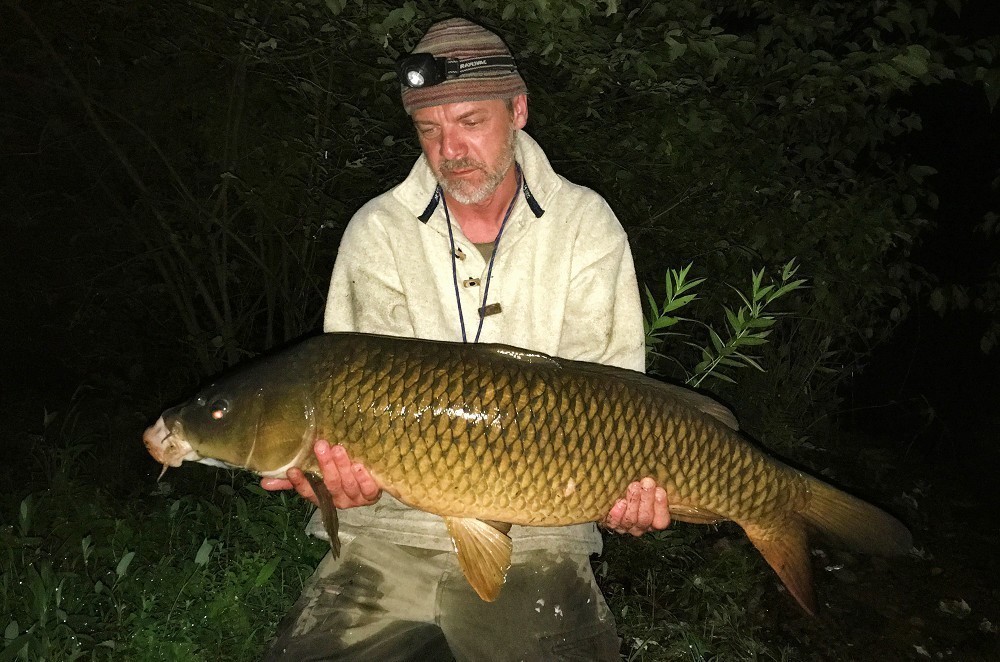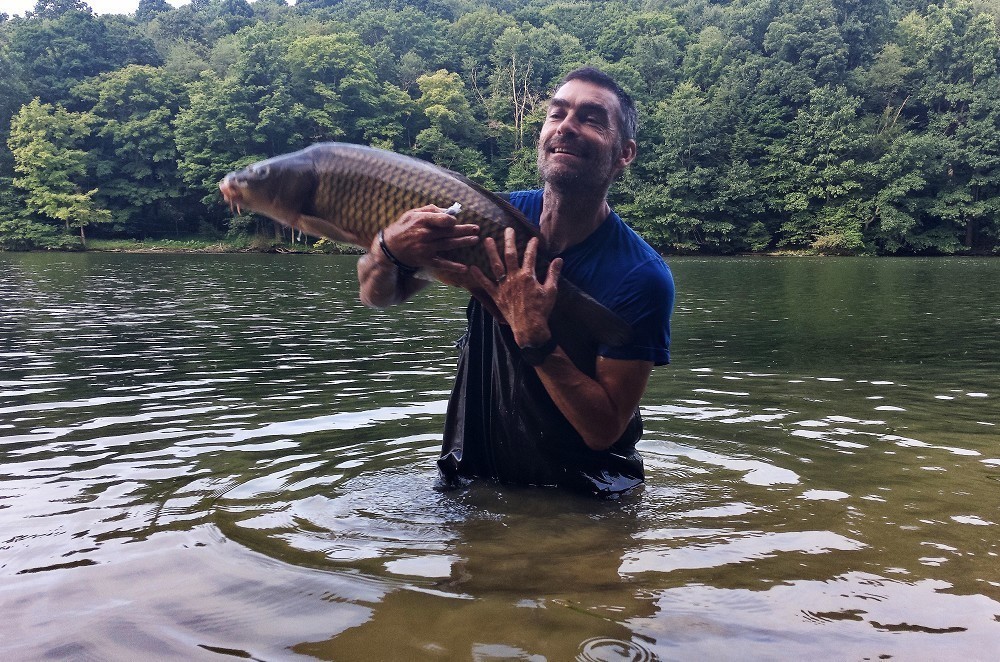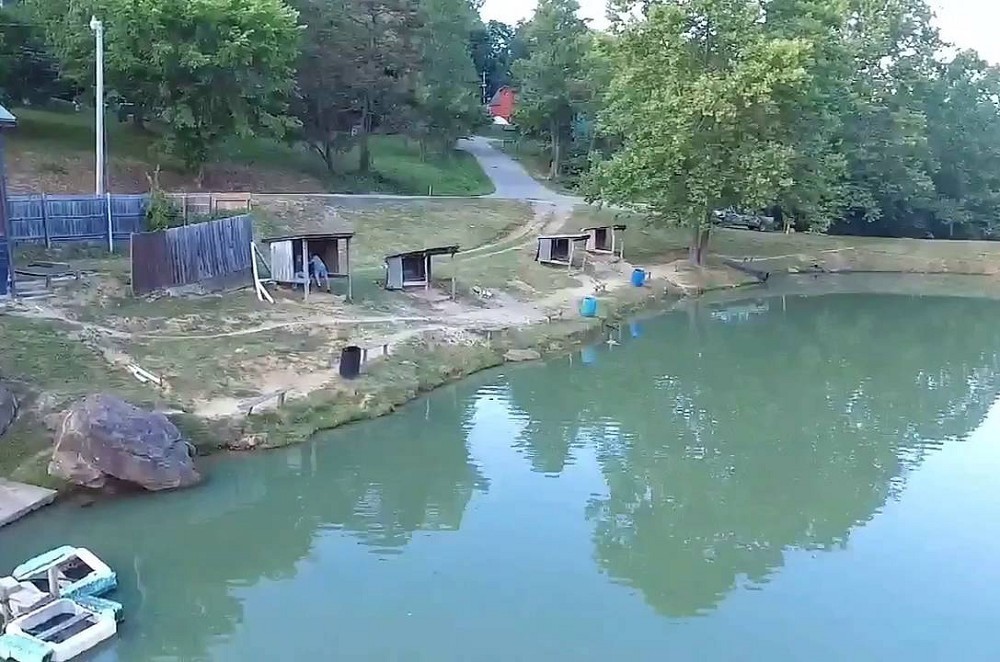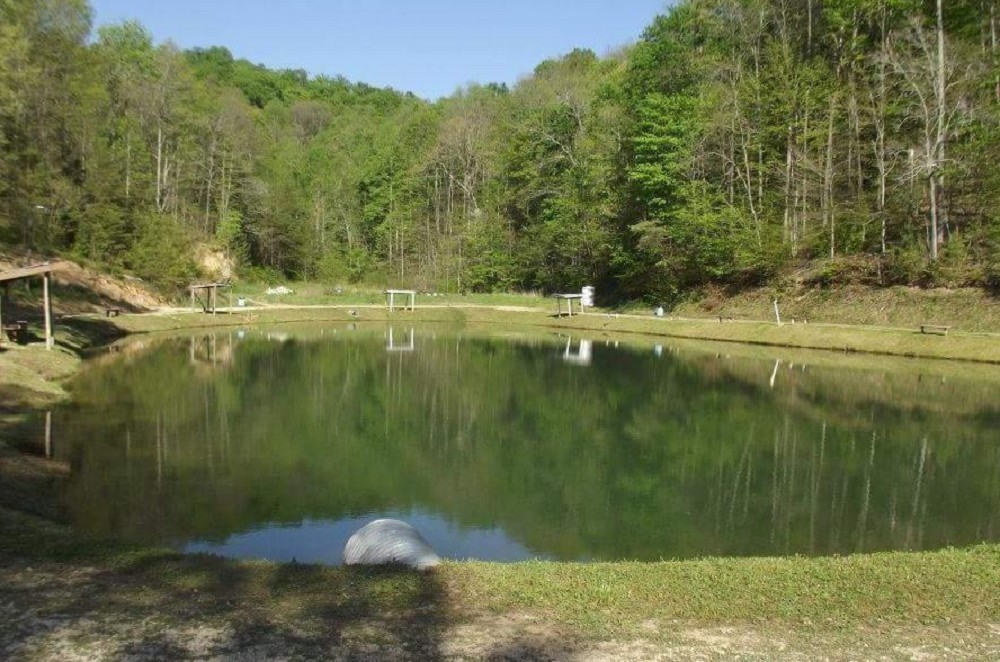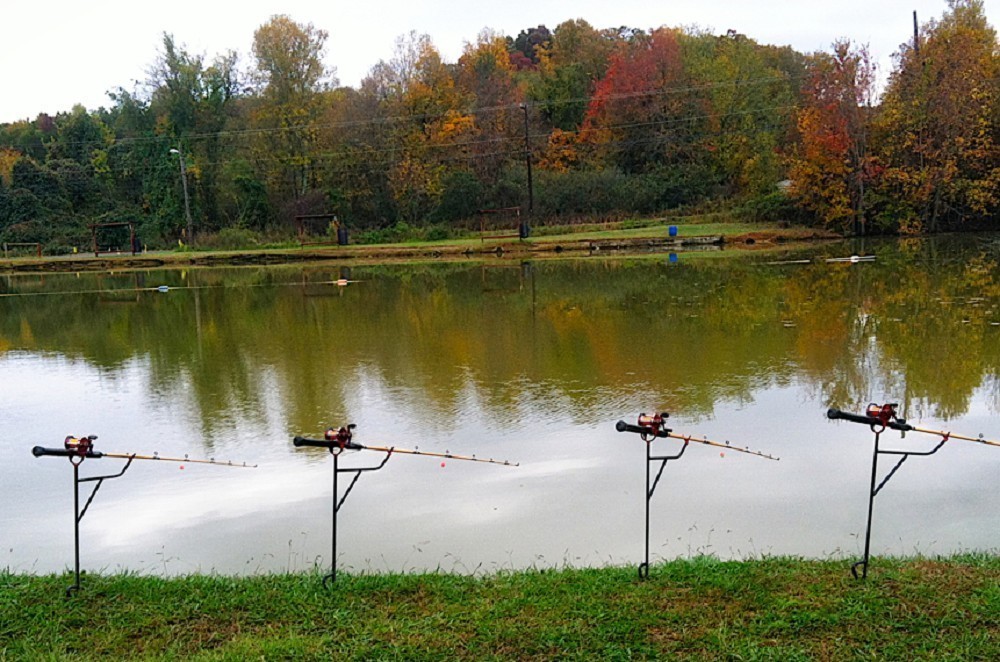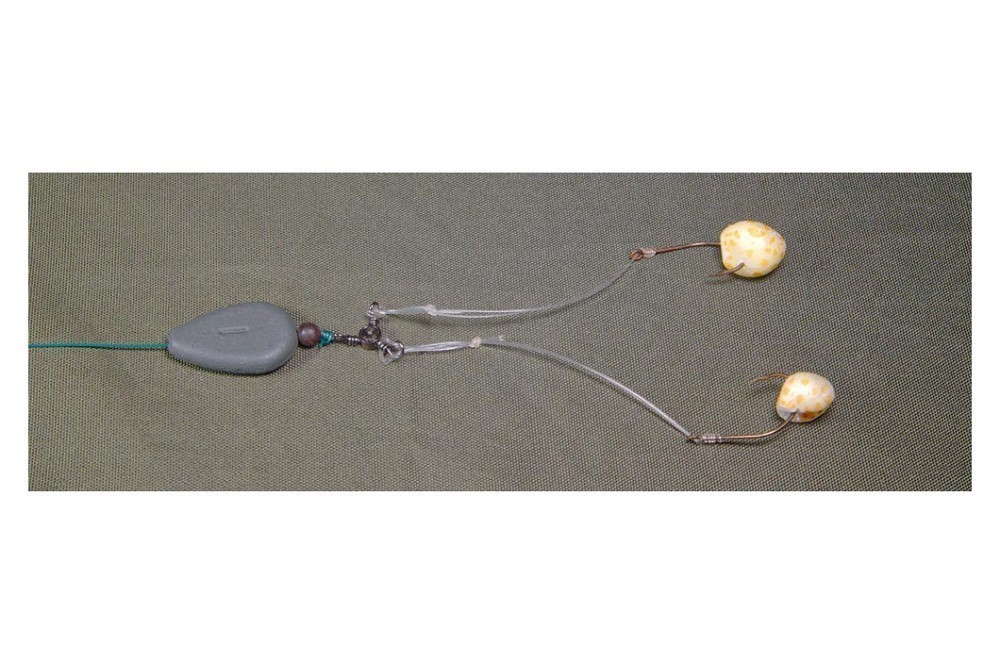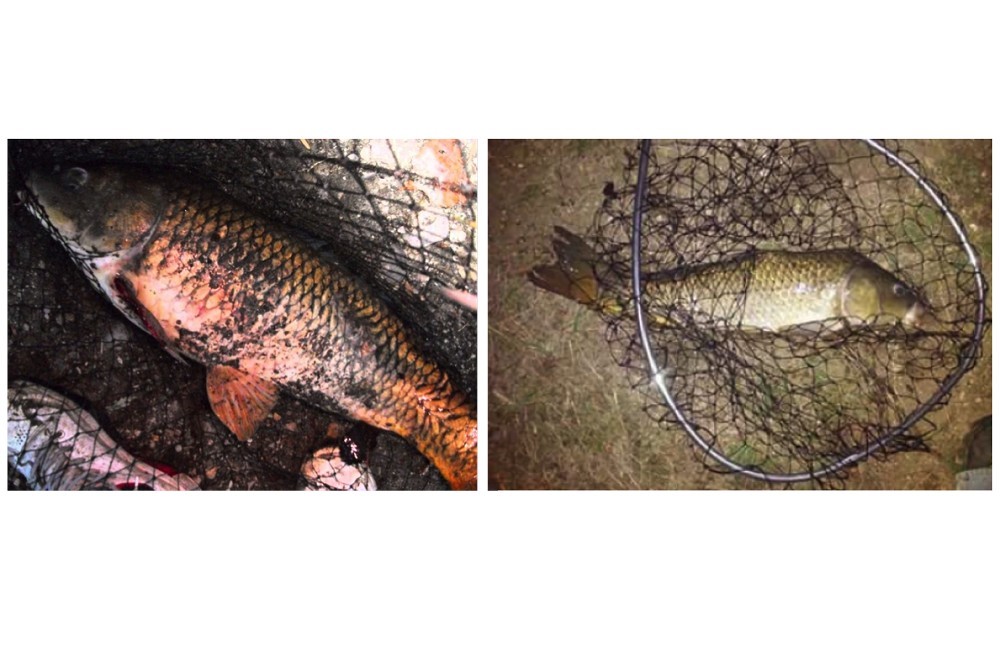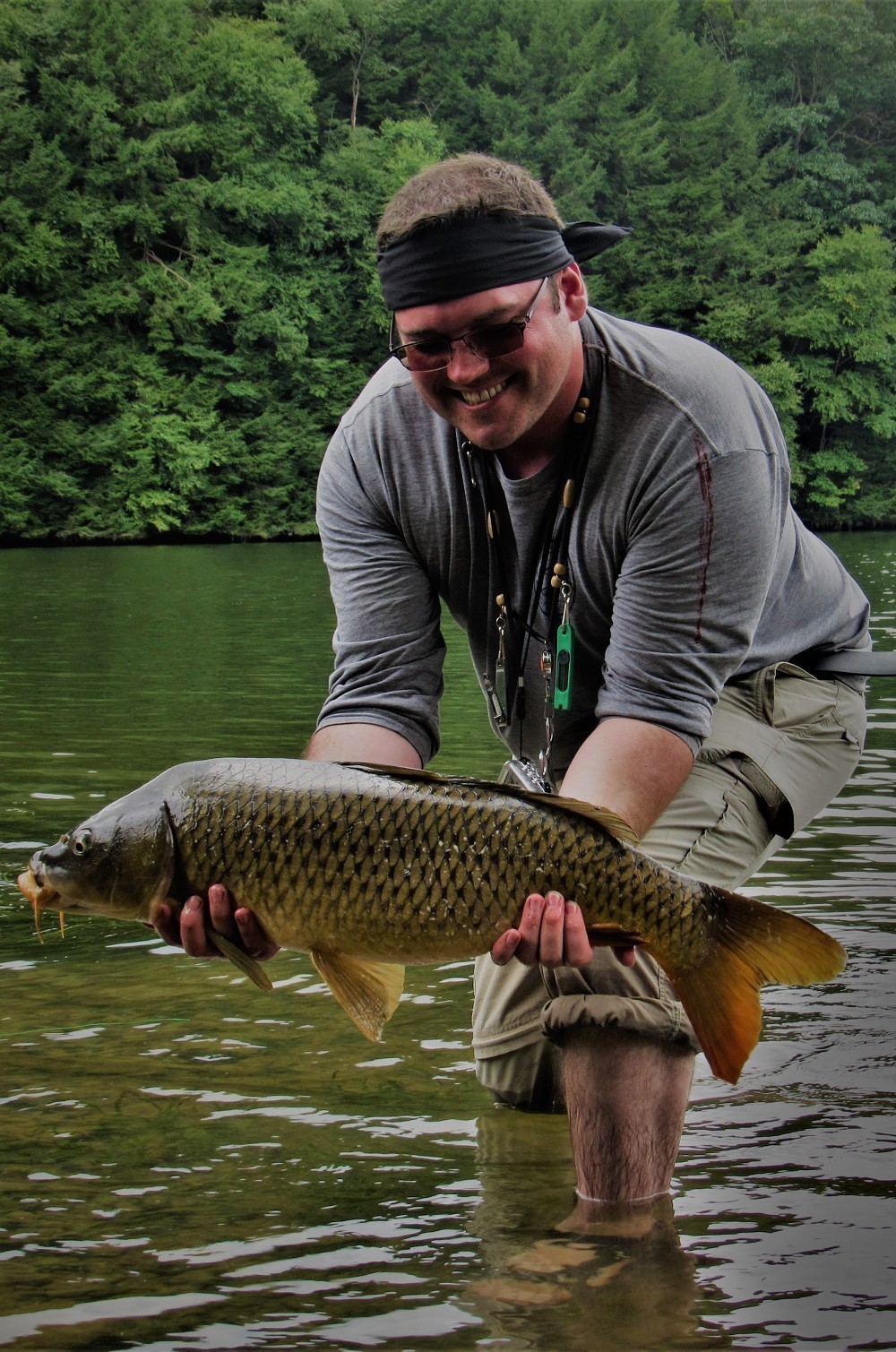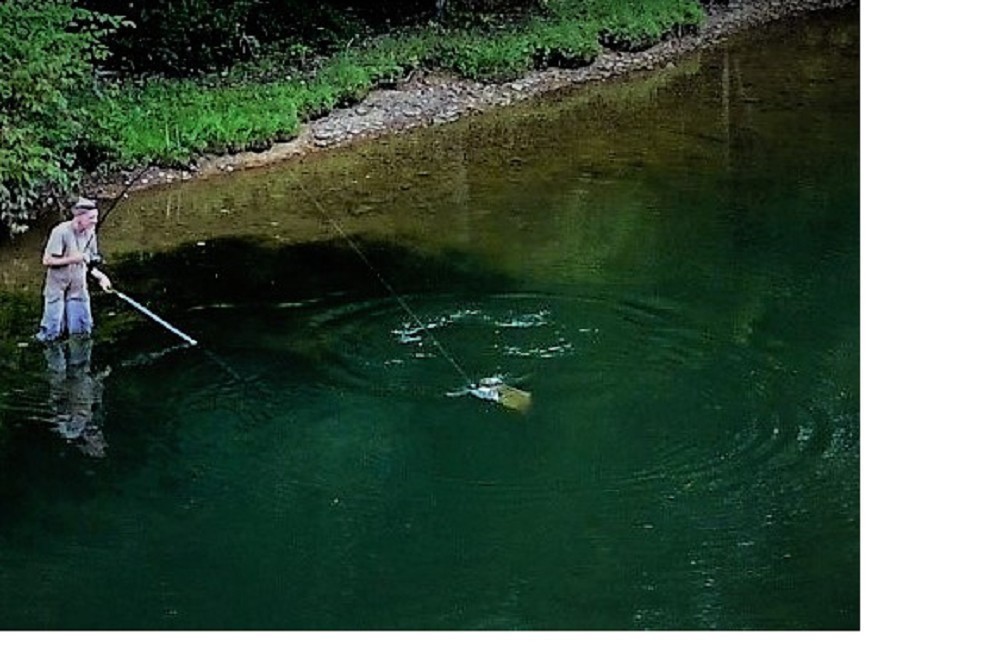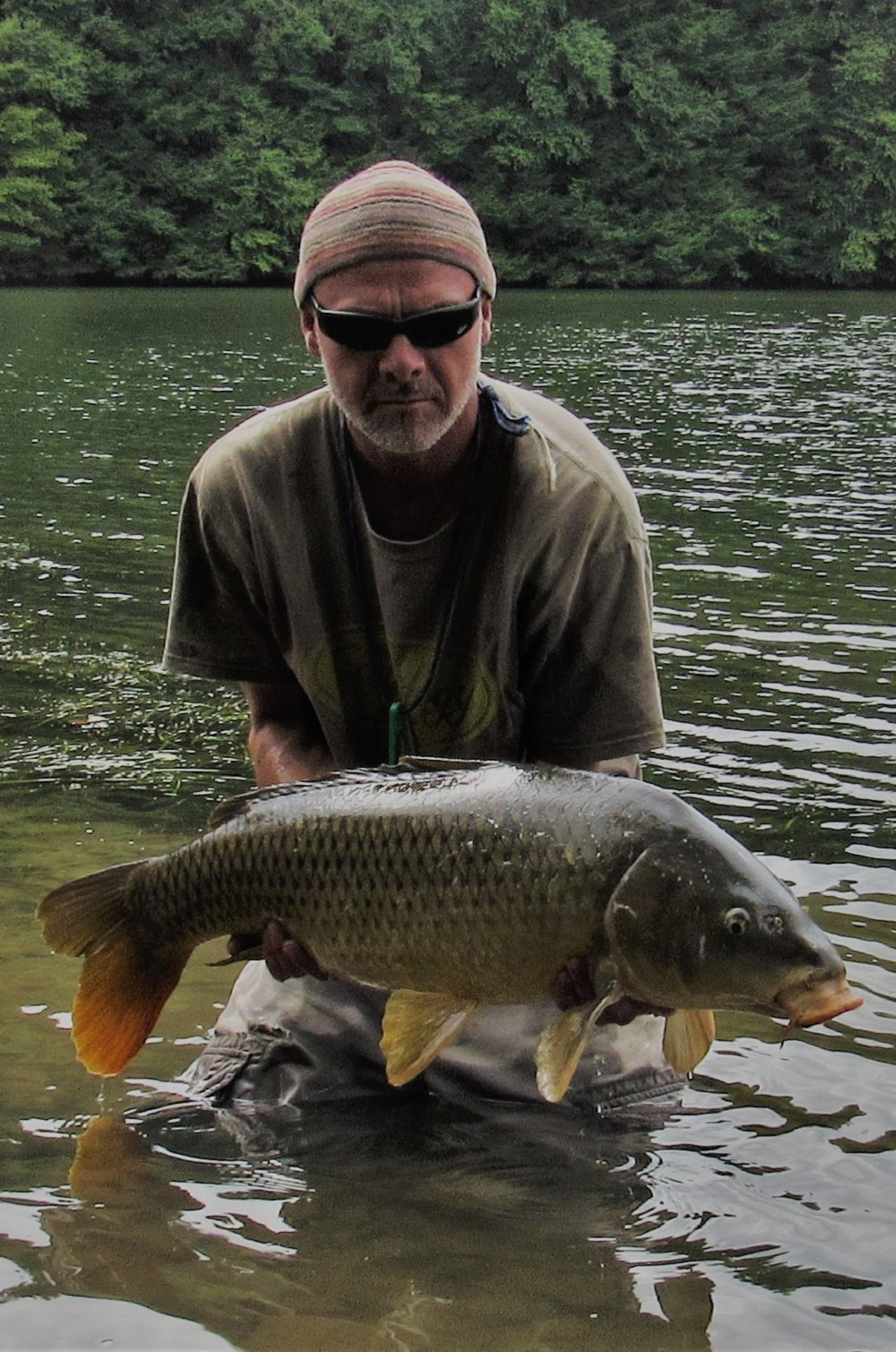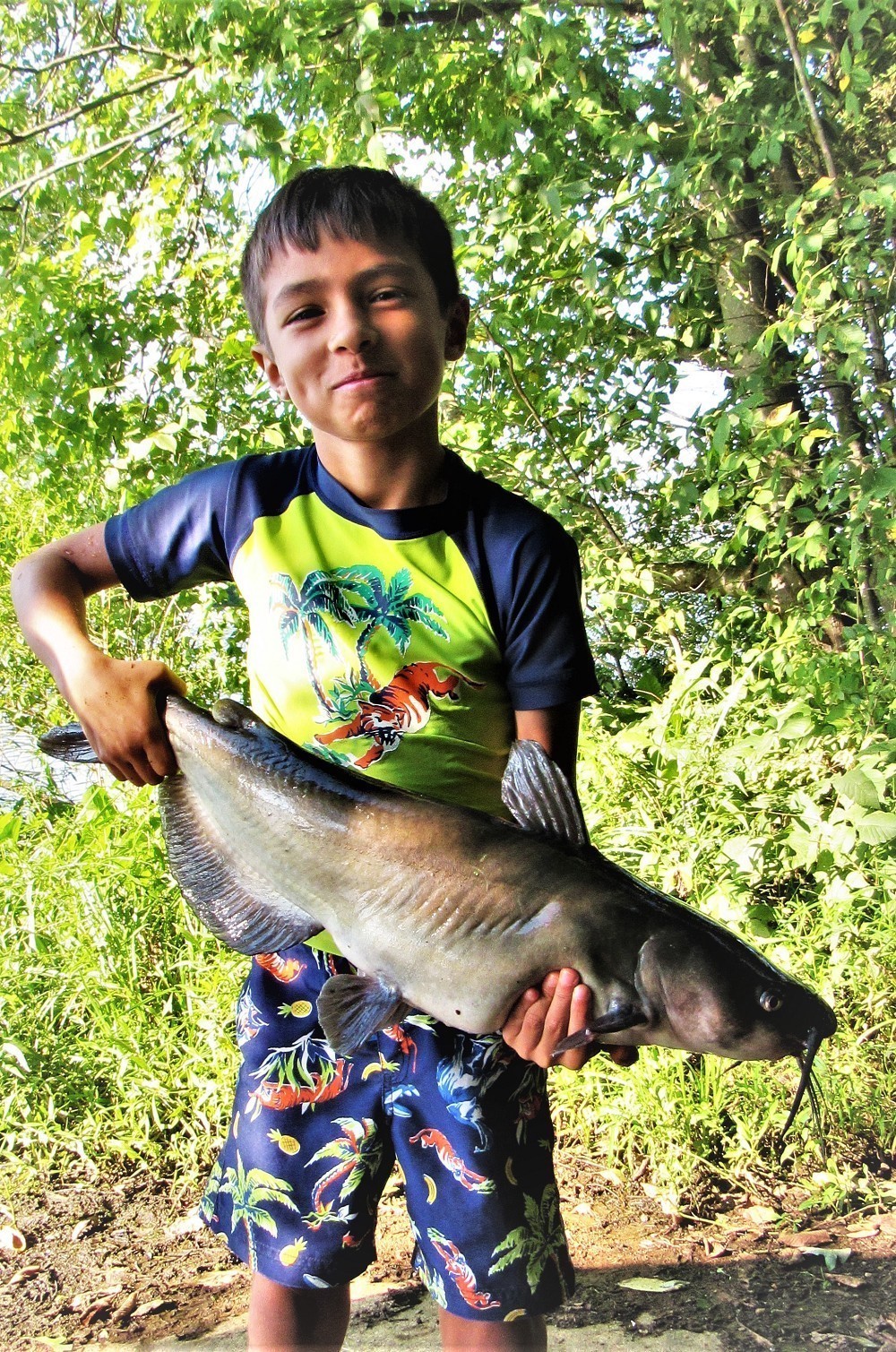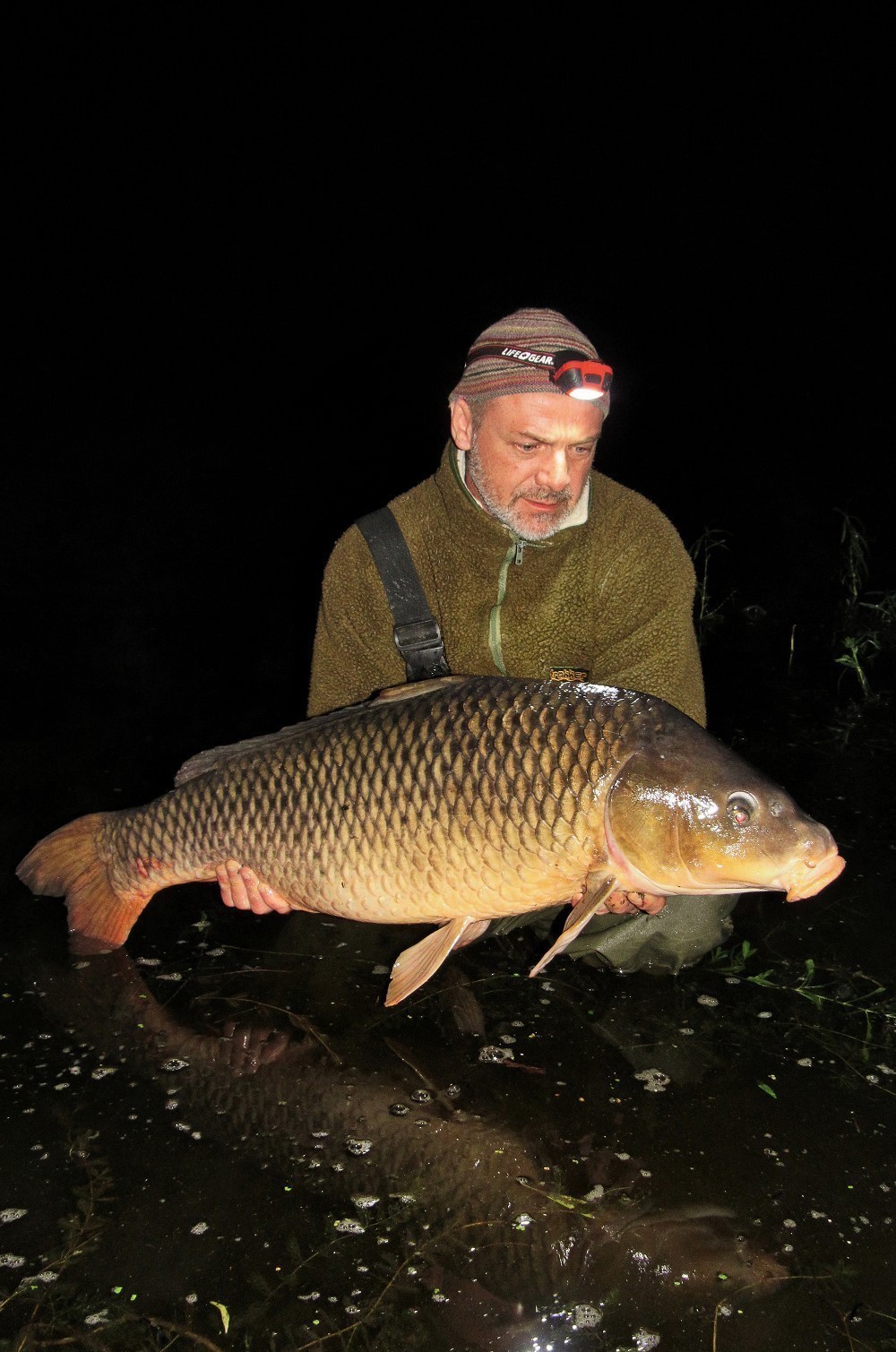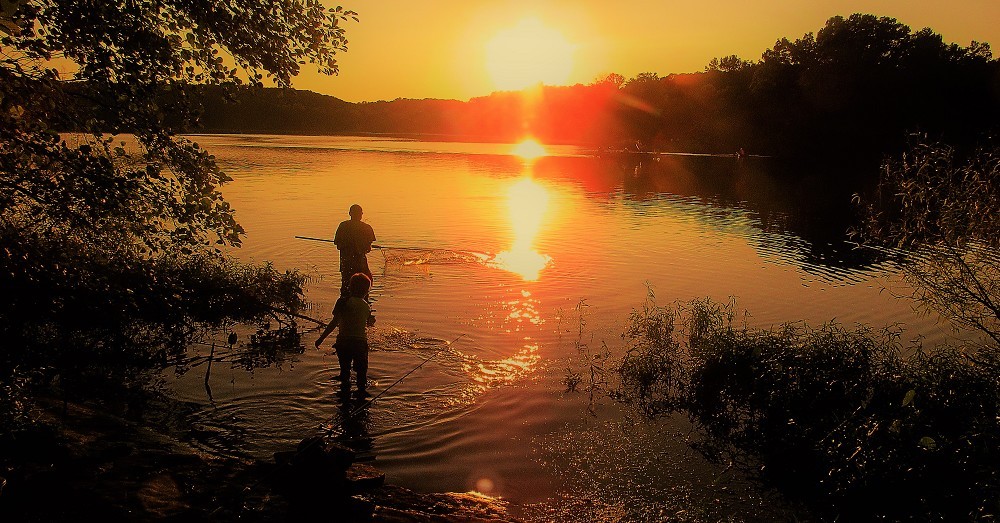
Carp Letter from America: August 2018
Simon Blanford and Andy Bell let us know what they've been up to this month...
On our way back to The Other Lake for a three night session at the beginning of August Andy voiced a particular concern. It wasn’t about the number or size of fish we might or might not catch, not about the possibility of rain - we’ve had one of the wettest summers on record so far - not indeed about boat incursions, game warden investigations, the chance of catching giardia, or lyme’s, powassan or west nile fever or bubonic plague. No, his worry, it turned out, concerned bears. Which was something of a surprise to Simon. We have done many overnight sessions on the lakes in this area and a number of these have been outwith designated camp sites - camping “in the wild” as it were. But this was the first time Andy had mentioned the possibility of bears. Now, for us British types, born and bred on our island, the fear of large carnivores has long since become a thing of the past. The last wolf was killed in the 17th century in Scotland and the last bear so long ago that it was assumed to be around 1000AD. We have to scare ourselves with silly superstitious stories about ghosts and ghouls or virgin births and a young earnest man who died but didn’t really, to experience even a slight prickly feeling. But here in the US we can still conjure up that little frisson of fear: there really is something in these woods that might eat us. Not often, the number of bear attacks in the eastern United States is way lower than say, death by refrigerator. But still, bears are here, they are large, have sharp, pointy teeth and do, though their diet is mainly vegetable, eat meat. Andy’s worry then was real (if vanishingly small) so it does raise the question, to misquote Peter and the Wolf; “if a bear should come out of the forest, then what would we do?”
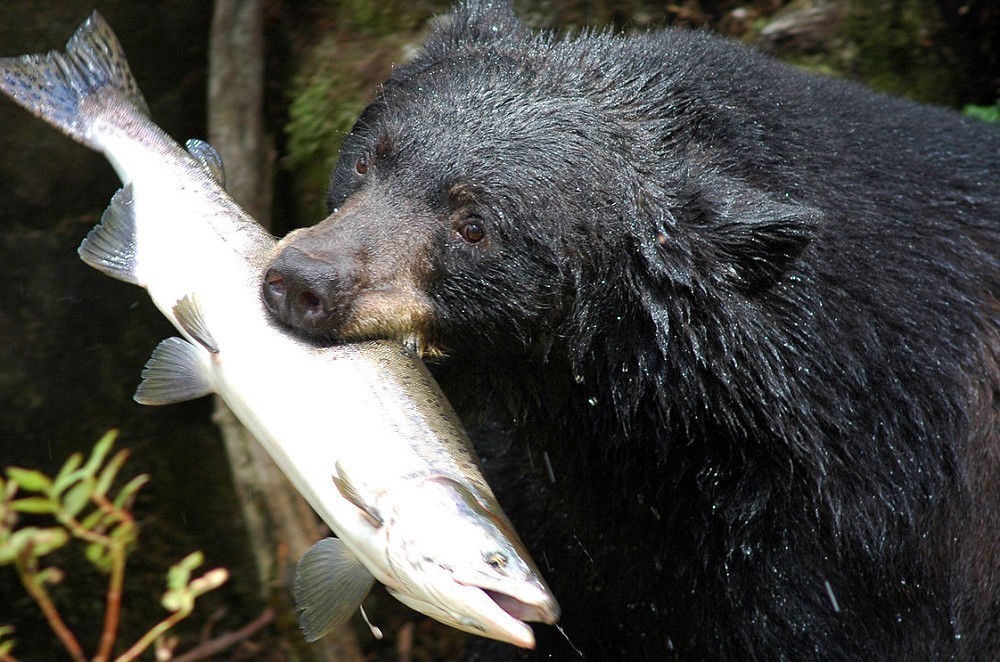 Bear and fish (not a carp clearly, Ursus americanus wouldn’t touch carp), the stuff of Andy’s vivid imagination.
Bear and fish (not a carp clearly, Ursus americanus wouldn’t touch carp), the stuff of Andy’s vivid imagination.Simon’s response is clear - jump in the lake. Andy’s was different and, and this is what Simon found surprising, carefully planned and thought through beforehand. Opening the boot he delved in a bag and came up with a bottle of BBQ charcoal lighter fuel. His cunning plan was to find a long stick, wrap the end with some torn strips of cloth and then soak it in lighter fuel. Should a bear come along he would simply ignite the thing and immediately have a burning brand with which to fend off the intruder - just like all those ancestors protecting their cave. In addition, he was going to light a fire (as it turned out, so close to his hammock it was a surprise he didn’t self-immolate), would only bring bait down from the car in small amounts so there wasn’t too much sitting round adding aromas to the woodland and finally, his pičce de rčsistance, had a plan to pee in discrete patches so as to form an invisible, but presumably smelly barrier (though it wasn’t entirely clear to Simon whether this was a repellent or an attractant) no self respecting bear would cross.
Such considerations play on the mind after a while and throughout this session Andy was to regularly loom up out of the night, wild-eyed and disheveled through lack of sleep and an inordinate amount of beer, griping in his fist a purposefully sharpened stick and looking for all the world like a modern day caveman, though a hirsute-challenged caveman, dressed in a North Face fleece and much holed waders.
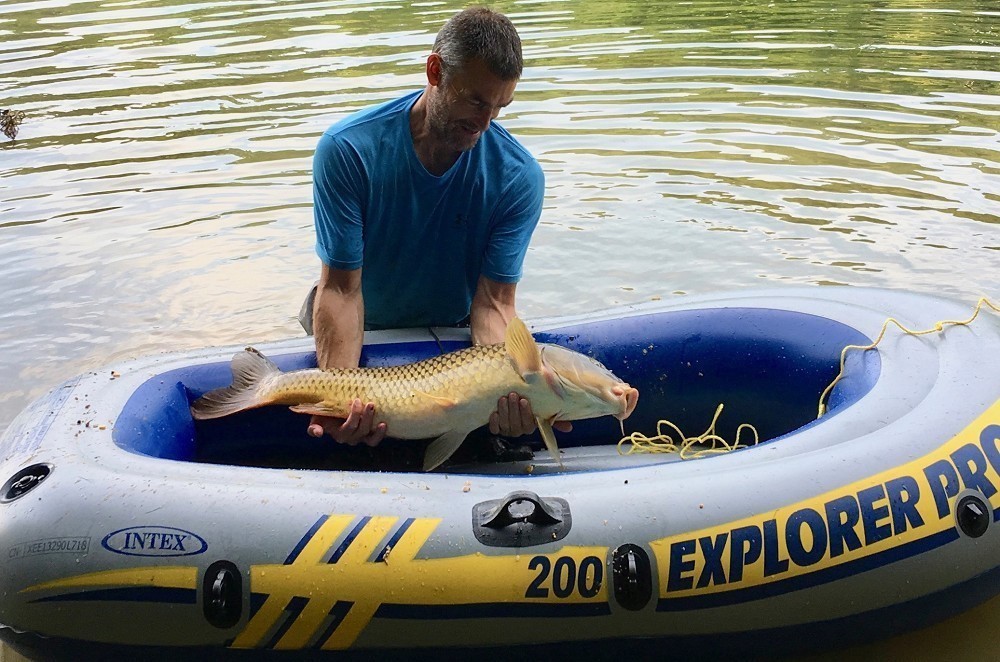 An off the peg boat, a supersize carp cradle/mat thing, or the fish’s personal paddling pool. it’s colourful and impractical, what could be better?
An off the peg boat, a supersize carp cradle/mat thing, or the fish’s personal paddling pool. it’s colourful and impractical, what could be better?Bears, it’s no surprise to report, did not appear but the carp were also rather slow to oblige us with their presence. Andy had stepped straight into the bay swim where we’d had success during our preliminary fact finding visit we reported last month. Simon, what with the potential for flaming brands and certainty of liberal urination, had decided on a swim just round a small point. It featured a moderate sized spread of lily pads around which we’d seen a number of carp cruising previously. It had also looked as though the area to the left had potential but it turned out to be a barren, stoney and uninviting flat. With the pads area only able to support one rod Simon started with the other two reaching over the steep drop off (which declined precipitously from around five feet to over twenty in a short distance) all the while eyeing the only other lily pads one hundred yards away on the far bank.
Andy caught the first fish that evening, a whopping four pounds. Simon responded a few hours after dark with a catfish, all eleven inches of it. For the rest of that night and through the following bluebird bright day we struggled for runs bagging a couple of singles and a low double. That night though the lily pads produced with a lovely fish half a pound shy of the twenty mark. Andy’s swims began to turn on and he caught fish at a regular, if not hectic rate. Simon had to wait for an individual or a pair of fish to come visit the lilies. His mid-water rods were producing nothing so he switched them to the far lilies, rowing out the rigs in the boat we’d stolen from his children.
Over the next day and night the pattern continued. Andy’s catch rate gradually increasing while Simon’s came in fits and spurts, helped by two much larger catfish. Finally in the early hours of our last morning Andy snaffled a strong twenty-six pounder and Simon, a half hour later, winched in a twenty-three from those distant pads.
We don’t often get to fish for a solid three nights, middle aged life commitments being what they are, so it was a delight to have such an extended session. That the quality of fish didn’t quite live up to our expectations was a small dent in an otherwise enjoyable session.
This, roughing it in the woods for fish that have grown up naturally in a water created many decades ago is called “wild” fishing. Apparently. But for there to be ‘wild’ fishing there also must be a corollary, an opposite kind of fishing for the wild side of fishing to have any meaning. ‘Domestic’ fishing perhaps, or “tame” fishing? Although the idea of domestic fishing sounds absurd it is in fact closer to the reality than many might like to admit. In our all to brief descriptions of the American side of fishing we have mainly dwelt on the preponderance of short rods, of boats, the largeness of the waters, the bass anglers, the boats, the absence of fine-scaled tackle. Carp fishing, where it’s carried out at all, is either an afterthought committed with the sort of crude kit most casual anglers use here, or it’s the full blown bivvy, boilies and bolt rig crowd who have adopted modern carp techniques from over the pond wholesale. But this isn’t really true because there is a carp fishing scene that runs parallel to what we generally see. This is the paylake (or Pay lake) scene, which as its name suggests is a much more commercial operation. Paylakes have been around for a while and though catfish are probably the most popular inhabitants some paylakes have been stocked specifically with carp since the 1950s. They are austere places on the whole, devoid of much aesthetic appeal on the bank and bereft of any interesting features or vegetation in the water.
The fish stocked into these waters come from commercial netters and not without some controversy. Some accuse paylakes of depleting natural waters of their specimen catfish so the owners can have something to attract punters. This uncannily echoes Gaz Fareham’s chat with Samir Arebi about the theft and return of The Big Girl, the Lac du Der common, from a French paylake in August’s CARPology magazine. Of course here no-one cares that the same may happen with carp. Paylake ponds are stocked at very high densities. Remembering that these paylakes are small, many less than an acre, yet they may still receive around 3-10,000lbs of fish for each one of those acres.
Operationally, and as their name implies the simplest thing about paylakes is that an angler can turn up and pay a fee for a ticket that allows them to fish for a certain number of hours. In that sense it’s very much like a day ticket water in the UK. But paylakes attract people not simply to fish in a contained, catered and highly stocked environment but also because they offer the chance of winning prize money. You turn up on a Friday evening say, pay your entry fee as does everyone else and it all goes into the prize money pot. The chance of winning back more than you paid out comes in all shapes and sizes. There may be a simple time-based tournament with the greatest weight winning the cash, a biggest fish cash prize, cash for the biggest fish caught each hour, cash for the capture of a tagged fish, cash for the capture of a fish of a specific, pre-determined weight, and on and on, each lake making up its own rules.
We know that competition (along with war) drives invention and the apparent isolation of paylakes has driven a very different set of kit and methods to those developed elsewhere. For a start the paylakers have stuck to shorter rods, 7-11 feet are preferred, and they furnish these not with fixed-spool reels but multiplier style reels (Abu Ambassadors are a favourite) and the rod/reel combination is usually mounted on a relatively crude rod rest system.
Baits and rigs are a bit of an eye-opener too. Groundbait doesn’t seem to be allowed so to add attraction an equivalent of a method mix is used - a pack bait. The ingredients have an understandably American lean: oats, grits, Panko (a kind of seasoned breadcrumb), chicken layer mash and many more. Added to these dry ingredients can be creamed corn, snow cone syrups, molasses, fizzy drinks of various sorts and then to that a range of familiar extra smells and boosters. Naturally, in the competitive world of paylaking there are numerous recipe combinations and many, many secrets.
All sorts of things are used on the hook (hair-rigs are rarely employed if at all) from natural baits like worms (nightcrawlers here), crawfish (crayfish) through to dough balls and wooden and plastic beads. Pop-ups are used (known as ‘lifters’) and something called a corn puff (a little like a sugar puff or popcorn but bigger … we think) is one of the most popular. Boilies don’t really feature - perhaps because they are a commie invention by those effete, socialist Euro types. As one paylaker wrote: “Only in a British/Euro swim can the boilie be taken honestly. Here in the states it's only a joke.”
Rigs have also developed largely independent of any other influence. A favourite sports two hooks, the hook lengths coming off a three-way swivel, fished as a running rig with either a ‘lifter’ or a ‘pickup’ (a bottom bait) solidly skewered on the hook. Naturally the absence of a hair-rig might raise some eyebrows especially since some paylake carping seems to have reached the same stage that occurred before the hair-rig came on the scene. Then twitch hitting was the thing and in some carp paylakes the better anglers are those who are good at “rippin’ the bump” as the paylake crowd might describe the process.
And the customers? Paylakes seem to attract the quintessentially blue-collar, down to earth fishermen; the guns and god, country music and American made trucks, sleeveless tees and mesh-back, John Deere cap wearing American angler. Which is obviously all good and wonderful and everything. However, both anglers and establishments also show no interest, show disdain even, for the target of their angling enthusiasm. There is little sense of fish care or general welfare (why should there be when another ton can be stocked whenever needed) and so some of the images of the carp that are caught show a happy captor contrasting with a piteously tattered and battered fish.
And the captors don’t seem at all affected. There is a sort of belligerent justification, a pride in their rough and ready attitude - “I mean, how often have ya seen unhookin' mats or carp first aid (LOL, can't even type that with a straight face) nonsense at the paylakes?” - as another paylake angler has written.
As such, paylakes may well be simple, accessible and relatively cheap waters full of large fish with the added incentive of perhaps being able to pocket more cash than you paid at the beginning of a session. But they also seem to be a fine example of the base, uncaring exploitation of what must seem (and we’ve heard this before) an endlessly replaceable commodity - the carp (and catfish) supplied by commercial netters. Here is the schism in carping attitudes writ large, a schism that, in its small way, might be said to reflect the wider one current in modern America.
A week or so after our long stint at The Other Lake the Neighbour (you remember him, considerably large chap, former carp virgin), now residing in a more civilized environ, announced an imminent visit. This was likely to be his final carp "teach-in" before the Andy's exodus from these divided States. Where would they go fish? Andy proposed the, as yet untested, new stretch on the Big River. It would require a bit of canoeing and an uncertain sleeping plan but should provide pointers for Simon and Andy as to whether it was worth pursuing further. No, the Neighbour responded firmly, none of that roughing it shit, he rather fancied the comfortable bivvying at the same site Andy and Simon had just spent three nights on the Other Lake. Andy mentioned the bears, the Neighbour scoffed. Being of a similar mass to Andy's ursine nemeses they were of no concern to him. Andy nipped out to significantly strengthen his stock of Dutch courage and hoped his trusty pointy stick would still be in residence upon his arrival.
Contrary to the previous two visits this time the action, shared alternately on four rods, was quick in coming. Seven runs in the first five hours yielded a number of teens and in mid-afternoon a low twenty for Andy. And then as dusk gathered and with expectations high the swims died. Midnight saw the first cat and the arrival of a shoal of carp, a shoal of uniformly small carp that produced a most unsatisfactory series of six fish all well below double figures, Andy was too disgusted to weigh them. As if to prove his indifference to the not so distant crunching of undergrowth the Neighbour slept soundly through most of the diminutive distractions.
Some considerable time after first light the smell of brewing coffee and a gentle prod from Andy's pointy companion initiated movement within the Neighbour's great black cocoon of a hammock. Andy passed on responsibility for the rods and attempted some shut-eye himself. Just as he was drifting off to the land of nod his reverie was shattered by an almighty buzzing and the sight of a monstrous primordial insect hovering before him. Stumbling from the confines of his hammock and scrabbling for his killing stick Andy observed a chuckling Neighbour sat cross-legged on the ground playing with a box on his lap. Ahhh, a drone; maybe they'd be some interesting action shots in the offing?
Having scared the bejesus out of Andy and satiated his aeronautical itch the Neighbour collapsed back into his silken hammock where upon there was a shrill ripping closely followed by a heavy thump. The Neighbour would be spending his second night on terra ferma. Throughout the morning and afternoon moderately sized fish did make an appearance and each initial bleat was accompanied by a rapid scramble to get airborne as Andy trilled in his best Vera Lynn: "they'll be bluebirds over the white cliffs of Dover.”
Yet nothing big did materialize. With the arrival of dark a fire was surreptitiously lit, the beers flowed and a rather relaxed evening ensued. At 3am the shared slurred opinion was that a run might prove problematic. Cue a steady beep, not the characteristic panicked screech of a spirited nipper but a far more deliberate and ominous note. Less than stable Andy tightened into it as the Neighbour, keen to retain his dry apparel, looked-on. Sure enough there were no rapid changes of direction just a ponderous weighty progress as the fish (or submarine, or merman, or manatee - it wasn’t clear yet) headed out into the bay. Paranoid after recent hook failings and not knowing of any snags in the vicinity Andy repeatedly let it take line until, eventually, after much careful pressure the head torches picked out a long pale streak below the surface. "Fuck that's huge" announced the Neighbour as he waded into the water, his precious dry shorts now forgotten. Alas it was not huge. It was long, indeed very long, but equally it was very lean. At 23lb 5oz it was not an extraordinary capture but, according to the Neighbour, rarely had he seen Andy happier to land a fish; and, hell, surely it called for another beer.
Only a few days later Mrs. Andy was due to mind a friend's children and Andy's work was still being obliging towards bank time. Thus a rapid plan was hatched: they'd take the kids away camping - to General Pinochet Lake. And yes, of course Andy would help with the children. And no, of course he wouldn't be totally focused on fishing. Mrs. Andy narrowed her eyes, pursed her lips and ... consented.
It has to be said that children are rather demanding and the first day was primarily spent swimming (often, against Andy's gentle advice, in the baited swims), splashing around in a dingy and chucking a frisbee. Nevertheless time was found for fishing, fishing for pan fish and it fell to Andy to constantly replace a succession of stolen worms and disgorge countless bluegills and pumpkinseeds of their recklessly swallowed hooks. The largely ignored carp rods did occasionally splutter into life but threw up only the wrong kind of fish. This was of little concern to the kids who decided they very much liked catfish.
The only concerted carping occurred between the children's bedtime and dawn - the little lad being up at the crack of sparrow's fart eager to snaffle a half-century of the poor palm-sized pan fish. Fortunately the General is nothing if not benevolent in terms of carp too and amidst a steady stream of high teens, three o’clock in the morning once again proved to be the magical hour. A great thick-lipped "O" broke the surface followed by a seemingly endless head. This was a beast, a thirty for sure. Extremely snug in Ikea's top-of-the-line weighing sling the scales begged to differ: 29lb 10oz. Really?
Between us over the last three seasons we have nabbed maybe eight or nine 29lbers and yet for a thirty we have to squint back to dim and distant 2015, a year before Trumpery had even entered Dreamers' nightmares. It’s not that there aren’t plenty around - it’s just that we have somehow, with the superlative skill and dexterity we possess, managed to avoid them. Next month will see the Andy's head west to a new lake, a lake renowned for its out-sized inhabitants. It may be his last chance for an American thirty. Read next months Carp Letter from America to see how he got on.





